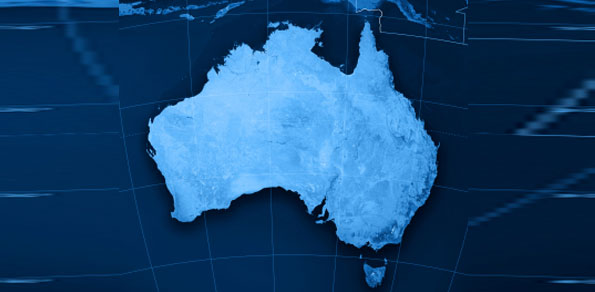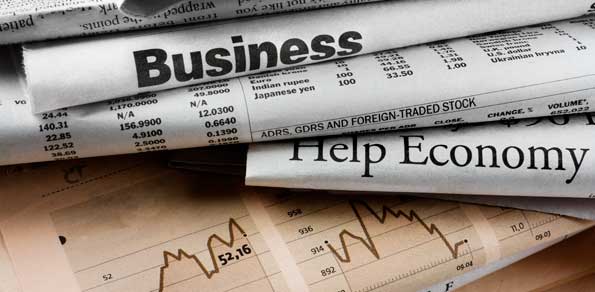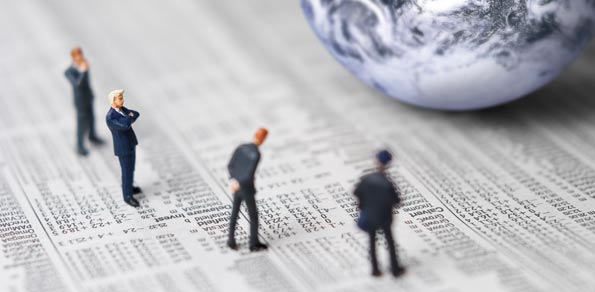Throughout the global financial maelstrom which has existed since 2007-2008 Australia has continually bucked the trend. Even the devastating series of floods experienced in Jan this year (2011) appeared to only temporarily knock the vast country from it’s gyroscopic reliance as a major world powerhouse. Australia’s per-capita GDP is higher than that of the UK, Germany, and France in terms of purchasing power parity. The country was ranked second in the United Nations 2009 Human Development Index and always ranks highly in The Economist’s worldwide quality-of-life index.
Australia is one of the fastest growing advanced economies on the planet. The IMF predicts that Australia will outpace most other advanced economies in 2011 due to the sustained boom in Chinese demand for Australian commodities. In 2010, Australia exported US$48.6 billion of goods to China, nine times more than a decade ago. The mining industry is lucrative, iron ore exports accounted for more than half of Australia’s exports to China. Mining and farming are expected to drive Australia’s economic growth in the near future. The Australian Bureau of Agricultural and Resource Economics and Sciences predicts that mine production will rise by 10.2 percent in 2010-2011 and farm production could rise by 8.9 percent.
Australia’s economy is expected to grow during the next five years. 2011 to 2015 could witness Australia’s GDP grow by 4.81 to 5.09 percent annually. By the end of 2015, Australia’s GDP is expected to be US$1.122 trillion. Australia’s GDP per capita is predicted for healthy growth. In 2010, Australia’s GDP per capita was the tenth highest in the world – growing from US$38,633.17 in 2009 to US$39,692.06. In 2011, Australia’s GDP per capita could increase by 3.52 percent to US$41,089.17. The next four years could see consistent growth in Australia’s GDP per capita, resulting in a GDP per capita of US$47,445.58 by the end of 2015.
The latest figures issued by the Australian Bureau of Statistics show that the country’s balance of goods and services reached a seasonally adjusted surplus of $1.826 billion in the month. Australia’s economy rebounded strongly in the second quarter with higher-than-expected growth of 1.2 per cent driven by business investment, household spending and a build-up in inventories. Annette Beacher, head of Asia-Pacific research at TD Securities expects GDP to rise to 2 per cent in 2011 and 4.5 per cent the following year.
According to the unemployment rate forecast provided by the IMF, unemployment will see a marginal decrease to 5.025 percent by the end of 2012. After which, they expect the unemployment rate (from 2013 to 2015) to remain constant at 4.8 percent.
Like most other advanced economies The Australian economy is dominated by its service sector, representing 68% of Australian GDP, consumerism being a huge constituent part. Growth in the services sector has grown considerably, property and business services grew from 10% to 14.5% of GDP over the same period, making it the largest single component of the sector’s GDP. This growth has been at the expense of the manufacturing sector, which in 2006-07 accounted for around 12% of GDP. A decade earlier, it was the largest sector in the economy, accounting for just over 15% of GDP. Current areas of concern to some economists include Australia’s current account deficit, the absence of a successful export-oriented manufacturing industry, an Australian property bubble, and high levels of net foreign debt owed by the private sector.
The agricultural and mining sectors (10% of GDP combined) account for circa 57% of the nation’s exports. The Australian economy is dependent on imported crude oil and petroleum products, the economy’s petroleum import dependency is around 80% – crude oil petroleum products.
So why is there so much mention of Australia boom gloom and doom in the media lately?
It appears to many commentators that Australia may have wasted it’s golden legacy and driven itself into becoming a one dimensional economy. Whilst it’s economic folklore that 80% of your business comes from 20% of your customer base, Australia has taken that to the extreme, appearing to have only one customer and a very narrow product range to prop up their export drive. If China slows, or cannot pay increased margins on their raw materials, whilst Australian imports continue to cost more, this vast country could find itself in an unusual economic squeeze. House prices, that permanent one way ‘Aussie punt’, have finally hit the buffers and now that game of spoof has reached it’s zenith the average Aussie is feeling less confident. With it’s main index (the ASX) falling by by circa 11.5% year on year that lack of confidence is amplified by poor pension and investment returns. There is also little comfort to be derived from a high interest rate of 4.75% on savings given the knock on effect on mortgage costs.
There is an enormous amount of hype underpinning the belief that mining is the big Australian industry. In a recent survey by the Australia Institute, it was revealed that Australians wildly overestimate the size and significance of the mining industry. When asked how big the sector is, people questioned thought the mining industry employs 16 percent of Australian workers, when the actual figure is 1.9 percent. The report reveals that while the mining boom has created new jobs, the benefits are a mixed blessing for the economy.
”The booming Western Australian economy has helped keep unemployment low, but the boom has meant that the Reserve Bank increased interest rates in order to ‘make room’ for the boom by slowing growth in other sectors. The costs of this policy have been borne largely by those with large mortgages, typically young families.”
”If wage earners were to benefit from the mining boom there would have to be a jump in real wages compared with what workers would have otherwise earned. Unfortunately, there is no evidence that this has occurred.”
The institute’s executive director Richard Denniss, reports that the public perception of the size and significance of the mining industry to the Australian economy are different to the facts.
”The survey found Australians believe that mining accounts for more than one-third of economic activity but Australian Bureau of Statistics figures show that the mining industry accounts for around 9.2per cent of GDP, about the same contribution as manufacturing and slightly smaller than the finance industry. The mining industry likes to portray itself as a big employer, a big taxpayer and a big money-maker for Australian shareholders, yet the reality just doesn’t match the rhetoric. The mining industry’s advertisements ignore the way that the mining boom is driving up the exchange rate, driving up mortgage interest rates and driving down employment in other sectors of the economy.” Dr Denniss said the report revealed that the mining boom was in fact driving a dangerous blow-out in the current account deficit.
Similar to the UK, which experience a gas and oil bonanza, the fear is that the country may have reached a ‘tipping point’ in it’s commodities boom, where if crude oil prices remain stubbornly high Australia’s growth may prove to be anaemic. The annual deficit on services stands at a record $7.19 billion.
Petrol, the single biggest family purchase in Australia each week, has risen to it’s highest price in four months. Whilst Australians are busily congratulating themselves for higher receipts for coal, iron ore and gold, they can’t lose sight of the fact that the high Australian dollar is also contributing to a record services deficit. The money comes in, but also goes out..the fear is that the ebb and tide is not in Australia’s long term favour.







Comments are closed.